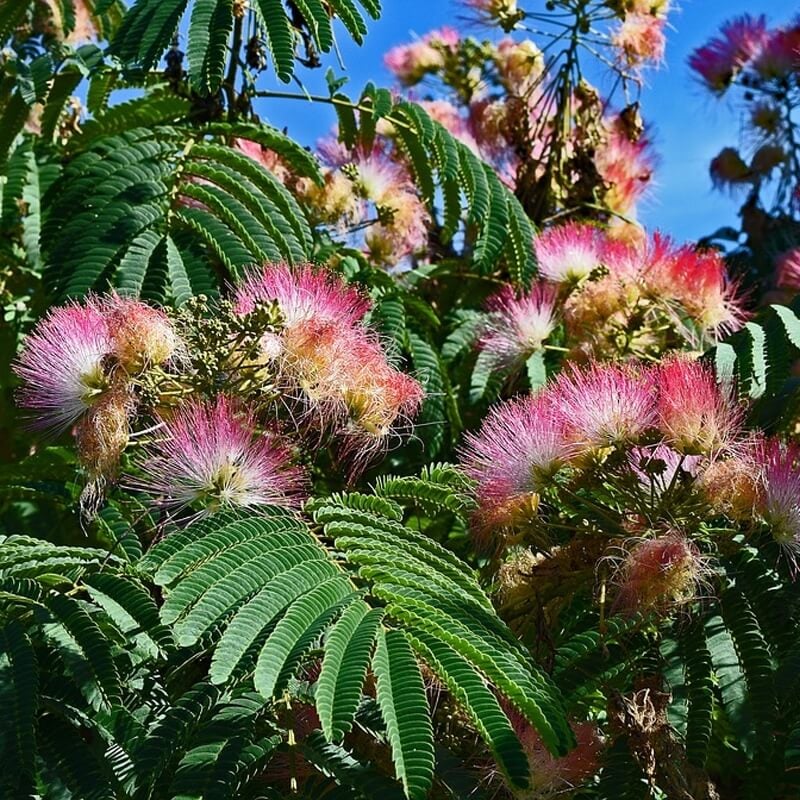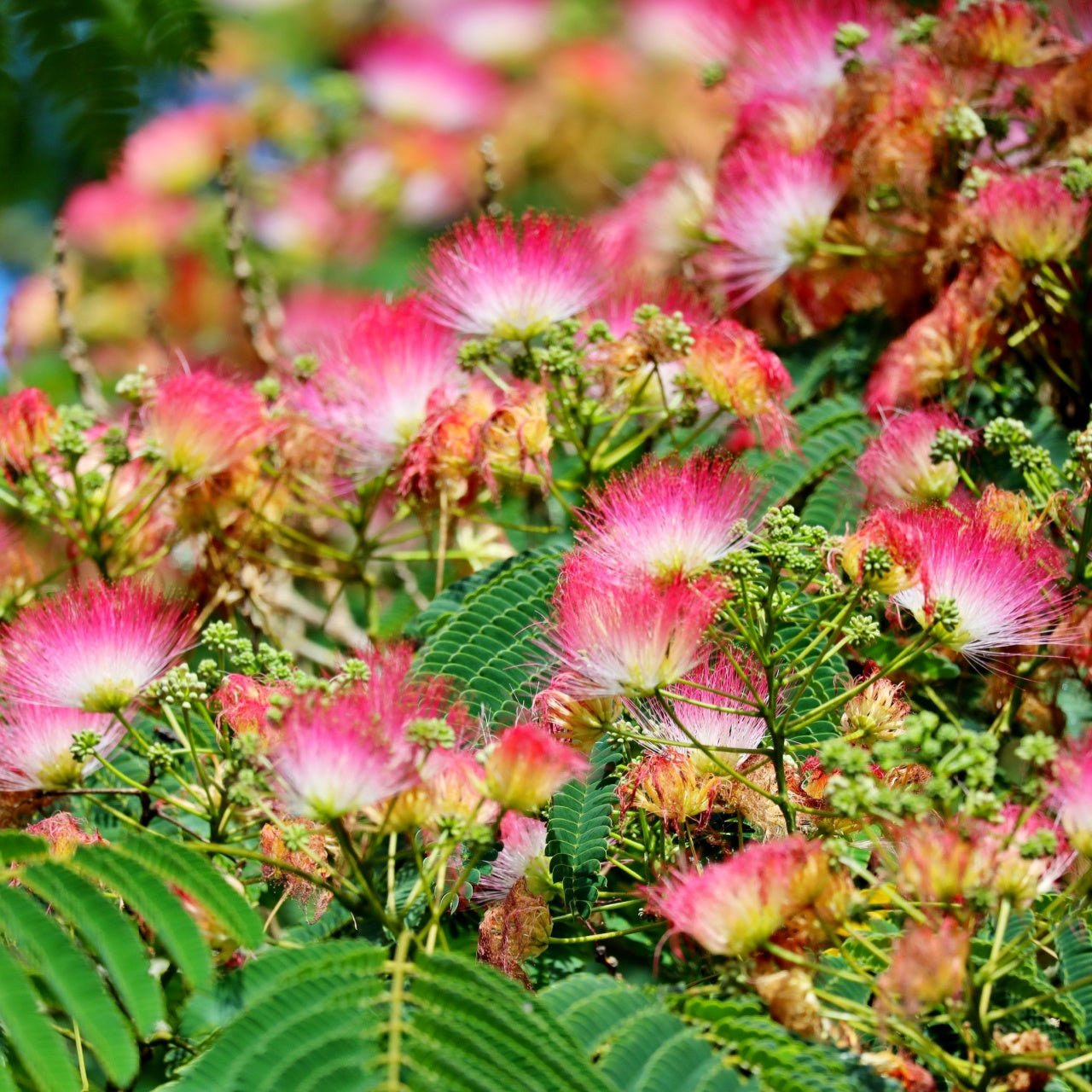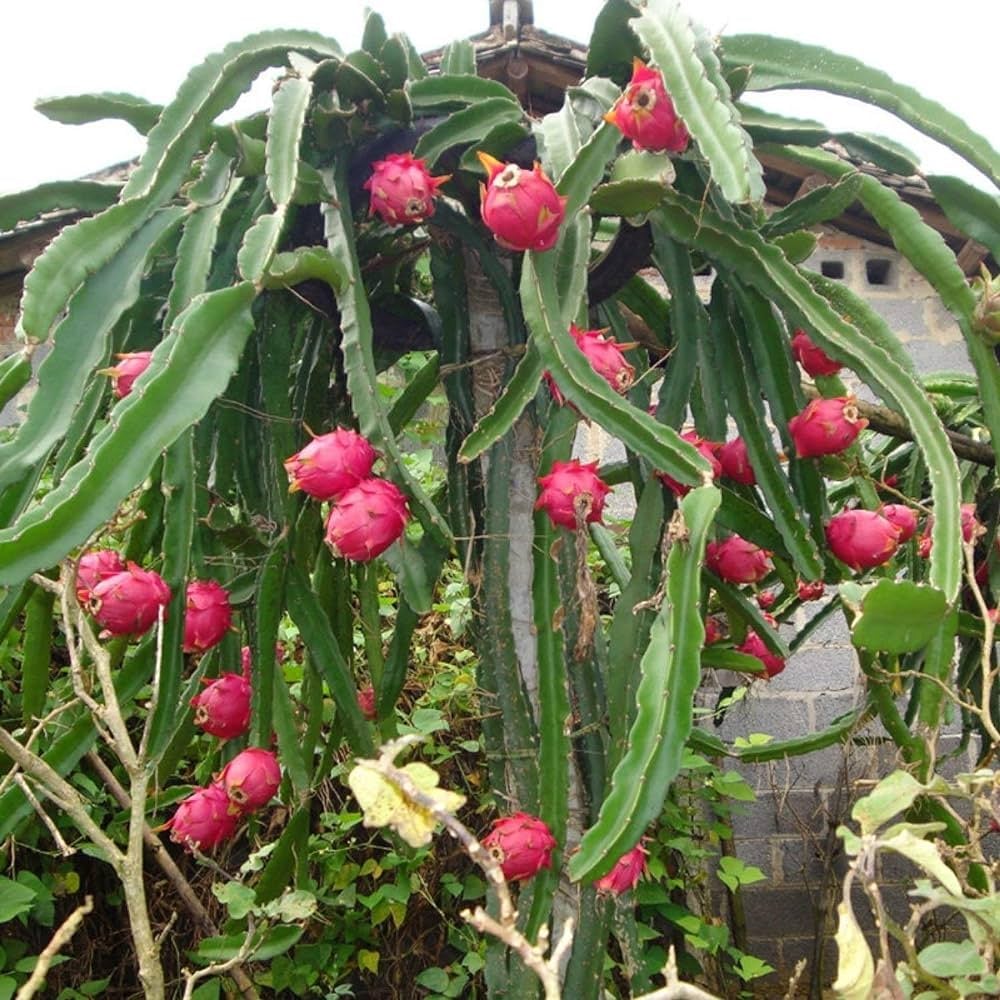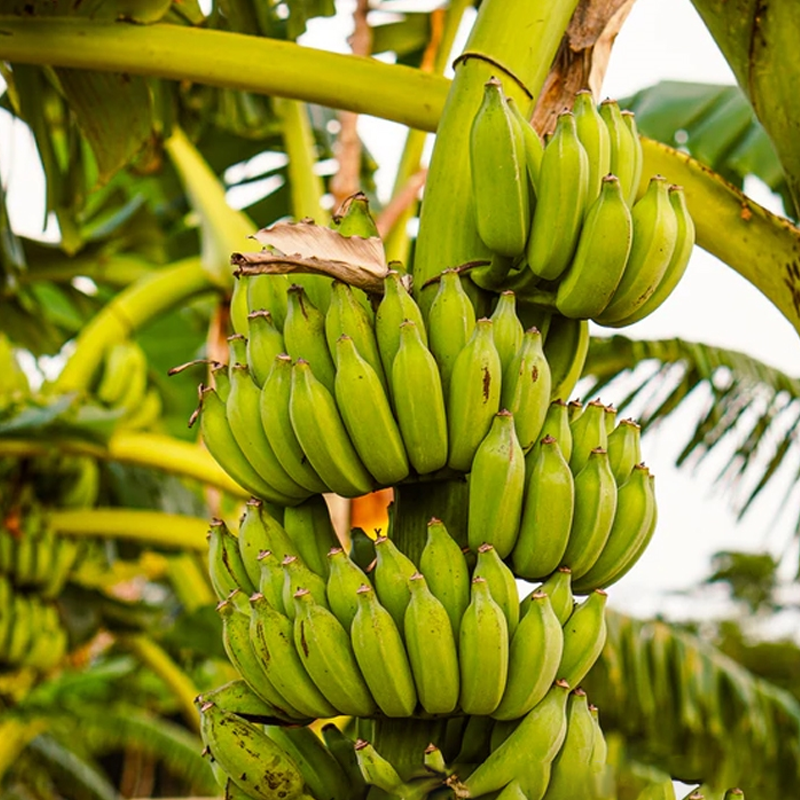




Mimosa Tree
Vibrant pink flowers attract pollinators
Low maintenance, hardy tree
Drought-tolerant and adaptable
Thrives in
ZONE 6ZONE 7ZONE 8ZONE 9ZONE 10This plant ships:
Ships Week of May 5thMimosa Tree - Albizia julibrissin
The Mimosa tree is a favored option in landscaping due to its distinct characteristics and aesthetic appeal. Native to Asia and commonly called the Silk Tree, it has gained popularity worldwide for its visual and environmental benefits. One of the standout features of the stunning tree is its graceful, fern-like foliage. The bipinnate leaves create a delicate and airy texture, adding a touch of elegance and classiness to any landscape.
The tree is famous for its silk flowers. Italian nobleman Filippo degli Albizzi introduced it into Europe in the 1700s. Native to southwestern and eastern Asia, it is part of the Fabaceae family.
Discover The Stunning Pink Blossoms Of Mimosa Tree
One of the reasons people love this plant so much is the silky pink blossoms. Once these blossoms appear, they don’t go away quickly. In fact, they can remain for up to four months. The flowers have a long, silky silhouette, which is why the plants are known as Persian silk.
An Exceptionally Cold-Hardy Plant
This lovely plant is exceptional because of its ability to withstand freezing temperatures. This is one of the reasons why it blossoms throughout the United States. In addition, this lovely plant can handle dry heat during the summertime as well.
While different plant species will grow 80 feet tall or higher, you don’t have to worry about these plants getting too high. This plant will usually only grow up to 15 feet tall. You can also prune it if you want to keep it shorter. Once it is in your landscape, you can enjoy having it as a focal point because of its short stature. Thanks to the plant’s stunning flower display, this plant will turn heads.
The silken flowers aren’t popular with just gardeners. Once the flowers appear, this plant is beautiful to hummingbirds and butterflies. The flowers look like they are made of bright, thin silk threads, drawing the butterflies and birds in. From June to July, you can spend your weekends bird-watching as local birds discover this beautiful plant.
Grows In a Variety of Soil Types
Whether you want a shaded spot in your garden or truly unique flowers, the tree is sure to please. Since some varieties only grow to a short height, this plant can be a focal point in your garden. Best of all, you can enjoy four months of lovely blossoms every year.
The tree's plump compound leaves and wispy pink blooms—both favored by bees, butterflies, and hummingbirds—are most popular. This is useful as it shuts its leaves when it gets dark or if you touch it, which most gardeners love.
The tree is also referred to as the 'happy tree' because it produces happy flowers that make any yard cheerful. The natives use preparations from this tree for conditions like malaria and mood enhancement, which are derived from the extracts from its bark and flowers.
The Tree Offers Durable Wood
The wood has been used because it is very durable. Due to its appearance, it can often be found in carpentry for making furniture, cabinets, and other kinds of wooden ornaments for interior design.
Mimosa trees grow best in warm regions and areas with full sun exposure. These plants are ideal for USDA hardiness zones 6-9 but are somewhat characterized by their ability to be planted on different types of soil in gardens and landscapes.
This Is How Your Plants Will Look upon Delivery

Bloom Season
Summer
Bloom/Foliage Color
Pink
Height at Maturity
Over 25 Feet
Care
Mimosa trees thrive in well-draining soil and benefit from regular watering during dry spells. Trim in late winter or early spring to preserve their shape and remove dead or crossing branches. Fertilize annually with a balanced fertilizer for healthy growth.
Plant Reproduction
Mimosa Tree spreads by seeds, root suckers, and invasive growth
Plant bare root trees during the dormant season in early spring or late fall (November through April). Dig the hole twice as wide as the roots so the soil is well-drained. Position the tree so the root flare is at or just above ground level. Fill the hole back with the soil you dug from and water. Maintain soil moisture, especially in the tree's early years, by providing deep, regular watering. Apply a 2-4 inch mulch away from the trunk at the base to retain moisture and suppress weeds. Prune trees during the first few seasons to establish strength and resilience, remove damaged branches, and continue maintenance pruning as the tree matures. Regularly inspect for pests and diseases and apply integrated pest management practices. Protect young trees from mechanical damage and extreme temperatures with tree guards, and stake them if necessary for support, removing the stakes after one or two years.
Shipping date depends on the date displayed and chosen when you order from the product's page.
We only accept returns on plants verified dead. If you think your plants have died, we offer a 1 year warranty, please use this File a Claim Link to verify dead plants and start with return warranty process.







Graceful Foliage:
Its fern-like leaves offer a delicate, feathery look, enhancing your landscape.
Fast Growth:
The Mimosa Tree grows quickly, providing rapid, lush greenery.
Vibrant Blooms:
The Mimosa Tree’s pink, fluffy flowers add a tropical touch to your garden.
Sensitive Reaction:
Mimosa pudica folds its leaflets when touched, possibly as a defense mechanism to expose its thorn-covered stems.
Caring Tips
How do I care for my Mimosa Tree?
Each box contains detailed care instructions and information about your product. But here's the basics.
Care Tips
Mimosa trees thrive in well-draining soil and benefit from regular watering during dry spells. Trim in late winter or early spring to preserve their shape and remove dead or crossing branches. Fertilize annually with a balanced fertilizer for healthy growth.
Light Requirements
Mimosa trees thrive in full sun, needing at least six hours of direct sunlight each day. They prefer bright, open areas with abundant light to support their rapid growth and vibrant blooms, while shade or partial sun can impede their development.
Hardy Planting Zones
6 • 7 • 8 • 9 • 10
Header
Use this content to share information about your store and products.
Frequently Asked Questions
How often should I water my plants?
How do I know if my plant is getting too much or too little sunlight?
What should I do to prepare my plants for winter?
What are the signs that my plant needs fertilizing?
How can I prevent pests from damaging my plants?
How do I choose the right plant for my climate zone?






